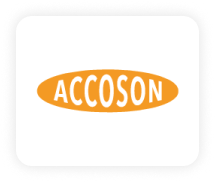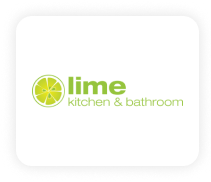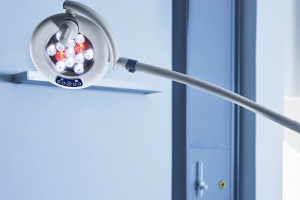Insulin Syringes Sizes

Insulin is a blood glucose level regulating hormone that decreases the blood sugar level by facilitating the intake of glucose molecules by the cells. However, in the case of Type 1 Diabetes, the pancreas loses its ability to produce enough insulin and resulting in high blood sugar levels which can become life-threatening.
In such cases, a medical expert may advise administering insulin externally on a regular basis to meet the body’s requirements and to maintain healthy blood glucose levels. There are many ways to administer insulin, out of which, delivering insulin through a syringe is the most commonly used by medical experts.
Does the Size of My Insulin Syringe Matter?
Medical syringes come in different sizes which may put patients in a dilemma to choose the right one for their daily dose of the hormone.
The size of the insulin syringe is decided on the basis of your prescribed hormone dosage. Therefore, patients may require to switch to multiple syringe sizes over time as per their body’s requirement. Choosing the wrong syringe size can lead to the improper dosage of insulin which can alter the effectiveness of the insulin treatment.
Therefore, it is better to choose the right syringe size for your insulin shot to get the hormone administered in proper dosage.
Different Sizes
Syringes with different capacities and lengths are available in the market. Self-care patients must consider giving a look at the different syringe parameters to choose the right syringe for them when it’s time to change.
The barrel is the cylindrical part that carries the drug or hormone which is to be administered. The syringe size is the capacity or volume of the drug that the barrel can contain. It is decided on the basis of insulin dosage decided by the medical practitioner.
Generally, insulin syringes come in the following three different barrel sizes:
|
Syringe Size (Capacity) |
Insulin Units |
Numbering Intervals |
|
0.3 mL |
Up to 30 Units |
1 Unit |
|
0.5 mL |
30 to 50 Units |
1 Unit |
|
1.0 mL |
50 to 100 Units |
2 Units |
The capacity of the insulin syringes is mentioned on the barrel and is numbered at regular unit intervals.
Importance of Needle Length and Gauge
Needle plays a crucial role in administering the drug to the target location. Different types of needles are available in the market with different lengths and gauze sizes. Choosing the right one for your insulin shot can help you to effectively administer the drug to the right spot with minimum pain and discomfort.
Needle Length:
Insulin shots are administered into the fat tissues under the skin and are relatively shallow. Therefore, short needles are used for insulin administration. Generally, standard insulin needles are 1/2 inch, 5/16 inch, and 3/16 inch long, out of which, the 1/2 inch needles are most common.
Needle Gauge Size:
The needle gauge size indicates the thickness of the needle. Thinner needles have a higher gauze size. Needles with 28 to 31 gauze sizes are most commonly used for insulin shots. Thick needles can help to administer the drug quickly, however, it can be comparatively more painful than needs with higher gauze size.
How to Safely Administer Insulin through Syringe?
In most cases, patients are required to inject the drug on a daily basis and thus, it is important to follow a proper stepwise procedure to inject insulin safely ensuring the effectiveness of the treatment.
Here is the complete stepwise method to safely administer insulin through a syringe.
Getting Ready for the Insulin Shot:
The patient must prepare themselves for the insulin shot before administration. Also, it is important to gather the supplies that can be required during the whole procedure. Patients can follow the steps mentioned below to prepare the insulin shot
- Step 1: Make sure you have all the required items ready. It may include a fresh needle, insulin vial, spirit of alcohol, and cotton swab.
- Step 2: Shake the insulin vial well and take off its protective covering.
- Step 3: Now, sterilize the top of the vial with a cotton swab dipped in alcohol to avoid any kind of contamination.
- Step 4: Remove the needle cap from the syringe and pull the plunger back up to the mark of insulin dose.
- Step 5: Now, inject the needle into the insulin vial and push the plunger to inject air.
- Step 6: Turn the syringe and vial upside down and pull back the plunger up to the desired dosage mark making sure that there are no air bubbles in the syringe.
Now, your insulin shot is ready and you can proceed with its administration.
Administration of Insulin Shot:
Insulin shots can be administered subcutaneously to various sites. Patients that require daily insulin shots must alter the target spots regularly to avoid discomfort and other complications.
Arms, abdomen, buttocks, and thighs are some of the most common insulin injection sites to choose from.
- Step 1: First of all, make sure that the chosen site is clean.
- Step 2: Pinch your skin with the index finger and thumb, and enter the needle making an angle of 45° with the skin surface.
- Step 3: After entering the needle, slowly push the plunger to inject the insulin into the fat tissue.
- Step 4: Wait for five seconds and slowly remove the needle out of the skin and cover the area with a finger or thumb to avoid insulin leakage.
- Step 5: Dispose vial, syringe, and needle to a safe place to avoid any contamination or spread of any infection.
Furthermore, it is highly advisable to seek expert medical advice in case of any complications during the procedure.
Conclusion
Type-1 diabetes is one of the most emerging disorders that require the regular administration of insulin externally and has no permanent cure. Usage of the proper insulin syringe and needle size along with an appropriate method of administration plays a vital role in the treatment.
 Offers
Offers





























![BD Micro-Fine + 324891 1ml Insulin Syringe with 29G x 12.7mm Needle [Pack of 200]](https://www.ahpmedicals.com/media/catalog/product/cache/5e1876c673de082c581639cdae9b2d13/3/2/324891.jpg)
![BD Micro-Fine + 324892 0.5ml Insulin Syringe with 29G x 12.7mm Needle [Pack of 200]](https://www.ahpmedicals.com/media/catalog/product/cache/5e1876c673de082c581639cdae9b2d13/1/2/12345_2.jpg)
![BD Micro-Fine + 324899 1ml Insulin Syringe with 30G x 8mm Needle [Pack of 200]](https://www.ahpmedicals.com/media/catalog/product/cache/5e1876c673de082c581639cdae9b2d13/3/2/324899.jpg)
![BD Micro-Fine + 324826 0.3ml Insulin Syringe with 30G x 8mm Needle [Pack of 100]](https://www.ahpmedicals.com/media/catalog/product/cache/5e1876c673de082c581639cdae9b2d13/3/2/324826.jpg)




